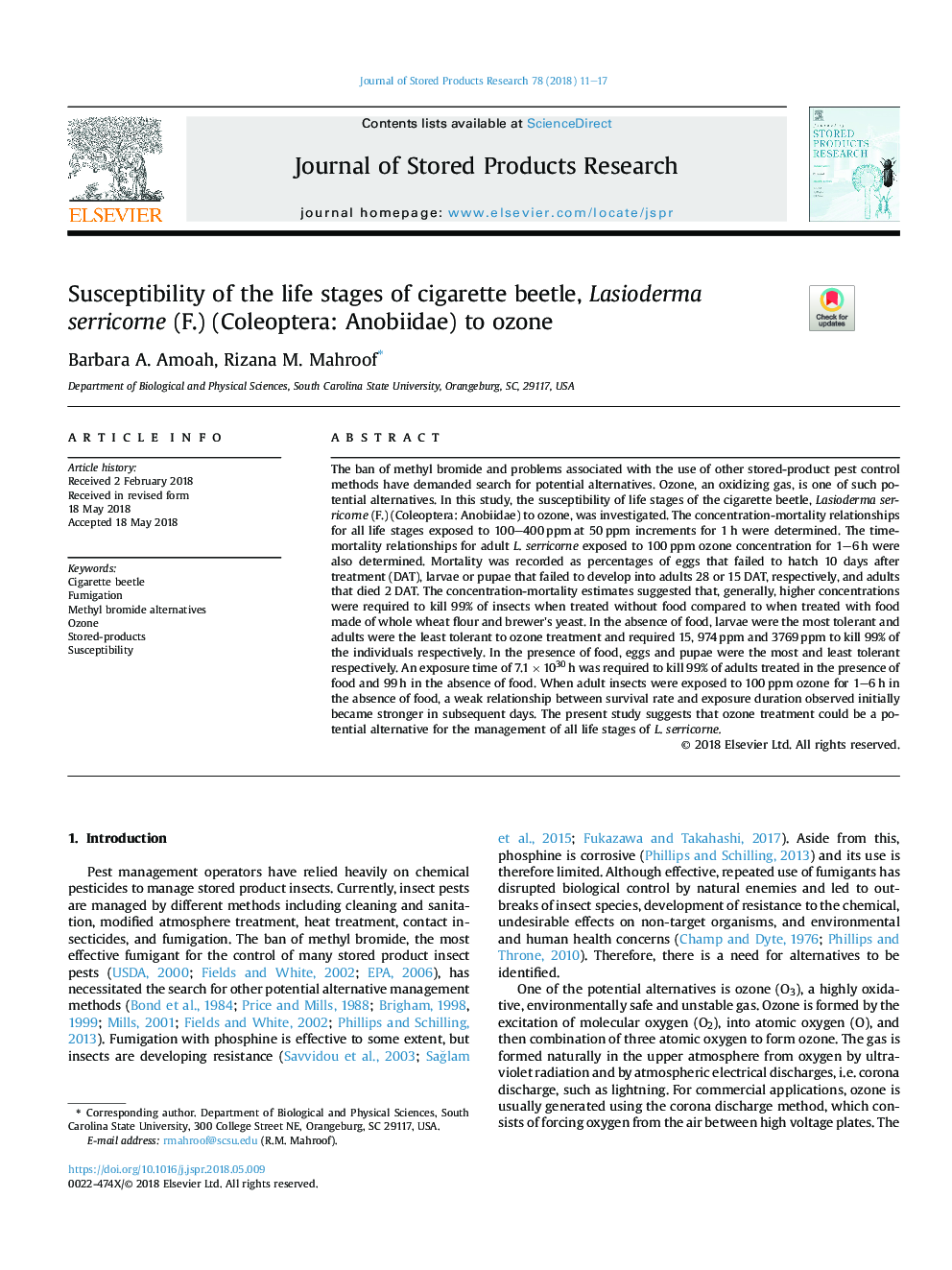| Article ID | Journal | Published Year | Pages | File Type |
|---|---|---|---|---|
| 8881584 | Journal of Stored Products Research | 2018 | 7 Pages |
Abstract
The ban of methyl bromide and problems associated with the use of other stored-product pest control methods have demanded search for potential alternatives. Ozone, an oxidizing gas, is one of such potential alternatives. In this study, the susceptibility of life stages of the cigarette beetle, Lasioderma serricorne (F.) (Coleoptera: Anobiidae) to ozone, was investigated. The concentration-mortality relationships for all life stages exposed to 100-400â¯ppmâ¯at 50â¯ppm increments for 1â¯h were determined. The time-mortality relationships for adult L. serricorne exposed to 100â¯ppm ozone concentration for 1-6â¯h were also determined. Mortality was recorded as percentages of eggs that failed to hatch 10 days after treatment (DAT), larvae or pupae that failed to develop into adults 28 or 15 DAT, respectively, and adults that died 2 DAT. The concentration-mortality estimates suggested that, generally, higher concentrations were required to kill 99% of insects when treated without food compared to when treated with food made of whole wheat flour and brewer's yeast. In the absence of food, larvae were the most tolerant and adults were the least tolerant to ozone treatment and required 15, 974â¯ppm and 3769â¯ppm to kill 99% of the individuals respectively. In the presence of food, eggs and pupae were the most and least tolerant respectively. An exposure time of 7.1â¯Ãâ¯1030â¯h was required to kill 99% of adults treated in the presence of food and 99â¯h in the absence of food. When adult insects were exposed to 100â¯ppm ozone for 1-6â¯h in the absence of food, a weak relationship between survival rate and exposure duration observed initially became stronger in subsequent days. The present study suggests that ozone treatment could be a potential alternative for the management of all life stages of L. serricorne.
Related Topics
Life Sciences
Agricultural and Biological Sciences
Agronomy and Crop Science
Authors
Barbara A. Amoah, Rizana M. Mahroof,
